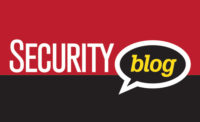The impact of COVID-19 on emergency communications

The end of 2020 ushered in a collective sigh of relief, with many of us happy to bid a year of record-breaking wildfires, an unusually active hurricane season, and a tumultuous political climate—all during a global pandemic— goodbye. The year was quite unlike any other, and we have been sharply reminded that no person or organization in any corner of the globe is immune to crisis.
But while 2020 had a series of unique challenges—and 2021 will surely bring many more— it reinforced the critical importance of ensuring employee health and safety. Amid the ongoing COVID-19 pandemic, prioritizing employee health, safety, and well-being will continue to be key to building resilience, continuity, and operational readiness in 2021 and beyond.
One of the most fundamental aspects of workplace health and safety is communication. By putting employee communication at the heart of your health and safety efforts, your organization can more easily meet its duty of care, maintain vital business operations, and keep employees safe. In fact, effective communication is one of the most significant ways to avoid preventable employee injuries, illnesses, and fatalities.
Why Safety Communication Matters
To understand the impact that communication can have on employee health and safety, consider aluminum giant Alcoa. In the late 1980s, Alcoa’s newly appointed CEO, Paul O’Neill, famously helped transform the organization into one of the safest—and most profitable—in the world, despite the industry’s inherent risks. A key contributor to this was O’Neill’s focus on encouraging and enabling frequent, transparent, and proactive communication across the organization.
During emergencies, when employees may be exposed to health and safety hazards, ensuring the rapid flow of accurate information is crucial. Studies show that during a crisis, information is as critically important to people as food or water. Not only can accurate information mean the difference between life and death, but it can also provide reassurance that response and recovery are underway.
One year ago, there were very few companies that had prepared for a global pandemic like what we are seeing with COVID-19. But that’s the nature of emergencies. They are often unexpected and unpredictable. It’s impossible to know when or what type of emergency or disruptive event will occur next, but effective communication can dramatically reduce its impact on your people and business.
When severe winter weather hits, for example, quickly notifying impacted employees of dangerous road conditions can prevent accidents and reduce the chances of injury. Alerting employees to a local COVID-19 outbreak and keeping them up to date on precautions they should take can reduce the risk of transmission. When natural disasters like tornadoes and earthquakes strike, timely emergency communication can even mean the difference between a safe escape and a tragedy.
With a comprehensive emergency communication strategy, health and safety professionals can keep employees safe, informed, and connected when it matters most. Fortunately, there is technology that can help.
Emergency Communication for the Distributed Workforce
The workplace today is very different than it was when most of us drove to work, stayed at the same desk at the same location for eight hours, then drove home. Over the last year we have seen a rapid, dramatic shift to remote work due to COVID-19. The workplace is no longer a single location or set of locations, it is a vast network of hundreds or even thousands of dispersed home offices. To overcome the challenges of communicating with an increasingly remote, distributed workforce, EHS leaders across every sector are turning to emergency communication technology.
Emergency communication software enables the fast, reliable delivery of mass notifications to any-size audience, on any device, over any communication channel. By using a mass notification system with multichannel, two-way communication capabilities, you can rapidly send and receive messages across multiple channels—including text, phone call, email, mobile push notification, desktop, Slack, and more.
EHS teams can easily send secure notifications out to affected employees in seconds, even from a mobile device. Using up-to-date employee data pulled directly from the organization’s Active Directory or HR system of record, an emergency communication system also allows you to easily segment employees into dynamic groups based on location, department, or any other attribute.
The reality is, we’re unlikely to return to the office anytime soon. Even when it is safe to do so, many employees have shared a desire to continue to work remote. In fact, a recent Gallup poll found nearly two-thirds of U.S. workers who have been working remotely during the pandemic would like to continue to do so post-pandemic. For businesses looking to protect both at-home and in-office employees from emergency, an emergency communication system will be critical, not only in 2021, but beyond.
Looking for a reprint of this article?
From high-res PDFs to custom plaques, order your copy today!





